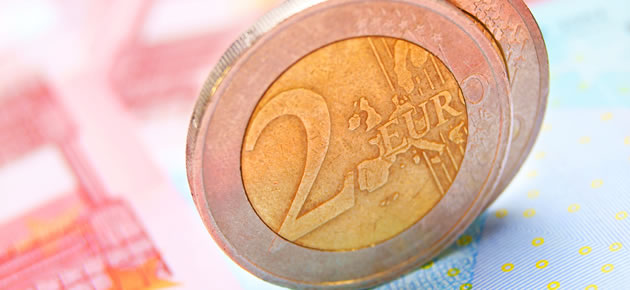The Euro to US Dollar exchange rate sank during North American trading as the Euro lost appeal in the wake of the European Central Bank’s rate decision and the upbeat US employment report.
The Common Currency was already struggling a bit against several of its currency counterparts following the publication of mixed PMI data and disappointing retail sales figures for the Eurozone.
Although the final Services and Composite PMI measures for Italy and France were slightly better than forecast, the data for Germany and the Eurozone came in slightly shy of initial estimates.
That being said, Markit economist Chris Williamson did comment; ‘At first glance, June’s PMI survey results make a grim reading and raise worries that the Euro area’s recovery is already fading. Dig a little deeper, however, and there are grounds for optimism.’
This was followed by the Eurozone’s retail sales report. Although sales growth of 0.3% month-on-month had been expected for May, sales actually stagnated.
On the year it was expected that sales would be up 1.8% but they actually climbed by just 0.7%.
April’s sales data was negatively revised, with the month-on-month figure becoming a decline of -0.2% and the year-on-year figure being cut to an increase of 1.8%.
The sales data had only a minimal impact on the Euro’s exchange rate however, as investors were holding off ahead of the ECB policy announcement.
As European trading continued the appeal of the Euro was further quashed by ECB chief Mario Draghi.
The ECB opted to leave fiscal policy on hold, as economists had anticipated, but Draghi chose to assert that the central bank is prepared to bring in asset purchase measures if they are required to keep deflation at bay.
Draghi commented ‘The key ECB interest rates will remain at present levels for an extended period of time. […] We are strongly determined to safeguard the firm anchoring of inflation expectation over the medium term.’
The Euro to USD exchange rate softened accordingly. Declines were extended after US employment figures showed a surge in the nation’s jobs sector.
The US unemployment rate fell from 6.3% to 6.1% rather than remaining on hold (as economists had expected) as the economy added a whopping 288,000 positions in June, far more than the 215,000 predicted.
The Euro to USD exchange rate was 0.3% lower after the report was published.
Meanwhile, yesterday’s better-than-forecast Canadian Manufacturing PMI helped the commodity-driven ‘Loonie’ maintain a stronger position against its European rival.
Canada’s International Merchandise Trade figures for May also surprised to the upside.
Before the weekend the Euro could experience movement as a result of German factory orders figures/construction PMI and the Eurozone’s Markit retail PMI. However, with global news limited, Euro volatility may be restrained on Friday.
Euro (EUR) Exchange Rates
[table width=”100%” colwidth=”50|50|50|50|50″ colalign=”left|left|left|left|left”]
Currency, ,Currency,Rate ,
Euro, ,US Dollar,1.3603,
,US Dollar,1.3603,
Euro, ,British Pound,0.7941,
,British Pound,0.7941,
Euro, ,Australian Dollar,1.4575,
,Australian Dollar,1.4575,
Euro, ,New Zealand Dollar,1.5576,
,New Zealand Dollar,1.5576,
Euro, ,Canadian Dollar,1.4538,
,Canadian Dollar,1.4538,
[/table]



